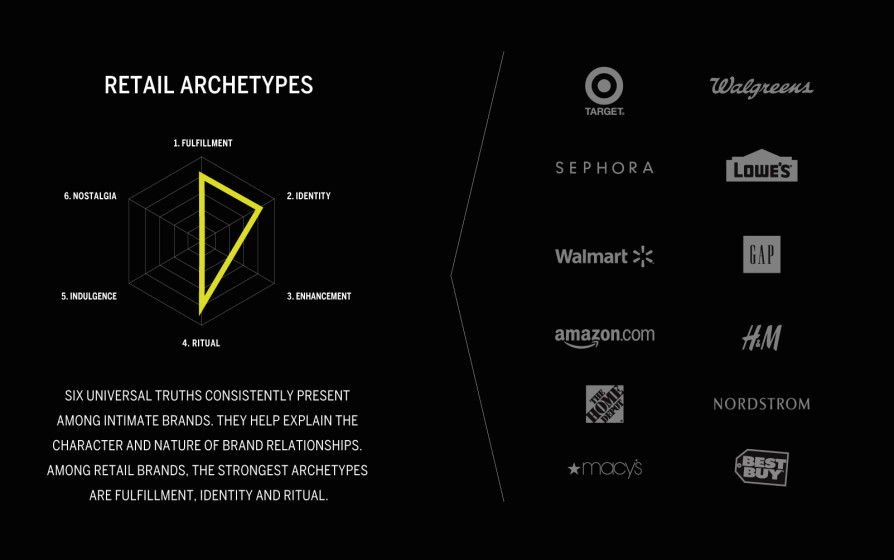With Black Friday 2014 just behind us, statistics indicate a sluggish spend, with sales falling 11% from the same period last year and consumers spending 6.4% less than they spent in 20131. There are many suggested theories for this decline, from a still-troubled economy and social protests to consumers’ waiting and searching for better deals over the holiday season.
In the typical American ethos of supersizing, it appears we have lost the ritual of Black Friday.
I work at a marketing agency that focuses on building ultimate brand relationships by creating greater intimacy between people, brands, and technology. For us, ritual is a powerful archetype—a universal truth—and from a marketing perspective, it’s something extremely valuable as a way to connect with customers. More than just habit, ritual is ingrained in our actions and becomes an important (if small) part of our lives.

For those who look forward every year to Black Friday, perhaps going out with family and friends, this event has become watered down with Grey Thursday and Cyber Monday. No wonder sales are down when we diminish the day. Black Friday has become eclipsed by a shopping season that unfortunately starts on Thanksgiving Day and extends until the day after Christmas.
Just as significant as the loss of ritual, brands themselves were generally disappointing this Black Friday, especially in terms of their social outreach and behavior. A few standouts demonstrated interesting approaches to promoting both sales and themselves. Even fewer used the ritual to connect with customers in important ways.
Success
Every Apple product you buy today will support @RED. #WorldAIDSDayhttp://t.co/KUB7Yz9DHb pic.twitter.com/EQBcwRknlE
— App Store (@AppStore) December 1, 2014
APPLE
Ranked #1 in our brand intimacy rankings, Apple stepped out of its own comfort zone to heavily promote its support of the (RED) initiative on World AIDS day. For a brand that is known both for minimal holiday sales and not promoting its CSR efforts, this was quite notable. By highlighting singular cause (AIDS), Apple delivered a sharp and focused message. Just as interesting, Apple chose to lead with a cause vs. a shopping/sales message on the busiest shopping day of the year, again demonstrating how it continues to lead.
Take a break from consumer madness tomorrow join us for our Worn Wear Swap in 8 major cities around the US! More info http://t.co/aCaDBcVXjw
— Patagonia (@patagonia) November 28, 2014
PATAGONIA
Unlike Apple, Patagonia is well known for its corporate responsibility philosophy of regularly rethinking its supply chain, manufacturing processes, distribution, and marketing for the benefit of the planet and its population. Rather than the expected—donating a percentage of Black Friday purchases to worthy causes—the brand sent out e-mails promoting the “Patagonia Worn Wear Swap” through a promotion with Yerdle stores on Friday. This encouraged customers to bring Patagonia clothes they were no longer using to the store in exchange for Yerdle credits. Free food, refreshments, and music were provided. This event demonstrated that the brand cared about people as much as it cared about sales during this promotion period.
TARGET
A different, more corporate standout is Target. Beginning with being in the Harlem store Thursday night, Target’s CEO, Brian Cornell, was seemingly everywhere during Black Friday—interviewed on CNBC, ringing in the NYSE opening bell—giving the impression that from the top down, Black Friday was being monitored carefully, a welcome change after Target’s credit card breach scandal and a seemingly silent leadership response. While Target’s brand communications were lackluster and sales dominated, an extremely visible and involved CEO was notable.
Disappointments
More registers, more joy! We'll have more lanes open this weekend between noon and 6 p.m. pic.twitter.com/5ghUBuodOF
— Walmart (@Walmart) November 29, 2014
WAL-MART
Surrounded by controversy related to its Ferguson, Missouri, store and protests of workers demanding higher wages, Wal-Mart remained quiet and stayed the course. While it was effective at using social media to acknowledge customer service questions, the company publicly ignored the larger issues swirling around it during Black Friday. This was a lost opportunity for the brand to carefully communicate to its customers to provide its perspective and build a greater connection between brand and customer.
Go time: @BestBuy CEO Hubert Joly gave the Roseville MN team a pump-up speech before opening doors to customers. | pic.twitter.com/xKnjzOkmwD
— Best Buy News (@BBYNews) November 27, 2014
BEST BUY
Best Buy’s site went down during Black Friday. That is one of the easiest ways to frustrate and disappoint customers and not fulfill basic expectations.
112 E-MAILS
I received 112 e-mails on Black Friday from retailers—in some cases, more than one from the same retailer. In nearly all cases, they promoted discounts only. Few used the opportunity to be personal, personable, humorous, or engaging. Whether I had shopped there once or had been a heavy user, the communications were nearly identical. Clearly a loss. I received nearly the same number of e-mails on Thursday and Saturday, with a merciful 25% decline on Sunday.
LACK OF INGENUITY
This is related to the point above. Few retail brands used creativity and strategic thinking to further solidify their relationships with customers during Black Friday. There was little mention of Thanksgiving, what the brand cared about, or whether it cared about the customers and its relationship with customers.
As a marketer, I see clearly that retailers and brands of all sorts largely under utilized Black Friday. By only focusing on discounts, the retailers and brands lost the opportunity to deepen their connections with customers, communicate in authentic and engaging ways, and demonstrate their values related to a season of giving. Let’s hope next Black Friday we see some brands seeking to build more intimate relationships in addition to offering deep discounts.
Review the sources cited in this article here.
To learn more about MBLM, click here.
